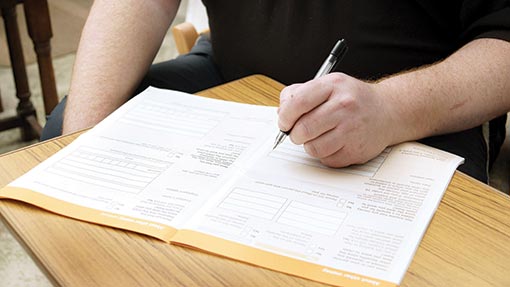Farm tenancy documents – the essentials

Having found a farm (if you’re a prospective tenant) or a tenant (if you’re a landlord), it’s easy to think that the offer you have made or accepted is the end of the story. Sometimes it can be, but as always the devil is in the detail.
Tenants and landlords tend to make the same mistakes when preparing or considering tenancy documents – getting it wrong can be costly for both.
So before either party signs on the dotted line, here are some fundamental issues to be aware of.
What must legally be included
If a tenancy is for seven years or more it must be registered with the Land Registry and the tenancy documents will need to include “prescribed clauses” – a summary of the tenancy in a form required by the Land Registry. If the tenancy is for a term of more than three years it will need to be granted by a deed –a document formally executed by both parties in the presence of witnesses.
Stamp duty land tax (SDLT) is likely to be payable by the tenant where the aggregate rent (the annual rent multiplied by the initial term of the tenancy) is more than £150,000. The rate is likely to be 1% of the aggregate rent.
An SDLT Return will need to be filed and submitted with HMRC – this can be done online and in some cases will still be required whether or not SDLT is payable. Failure to do this within 30 days of practical completion of the tenancy will incur penalties from HMRC.
 John Robson
John RobsonManaging director, H and H land and property
Key things that should be included and considered
Tenancy documents should include names and addresses of all parties and an exact description of the holding – its location, size, buildings, farmhouses, and any other features that distinguish it.
Agreement length and the exact starting date should also be included, as well as the rent, method of payment and payment dates. Detail of how ingoing payments such as SPS or milk quota entitlements are to be treated should also be covered.
Tenants should analyse what is included and whether they can accommodate obligations such as nitrate vulnerable zones, environmental schemes and repairs. An agent can help ensure tenants do not take on too much (for example, costly repairs or improvements).
Review and understand every clause of the document and think through how it affects your business during and at the end of the tenancy. Clauses should be tightly worded – most problems happen when they are left open to interpretation.
Break clauses
Break clauses should specify the dates and reasons that may be used by either party to end an agreement early – there are no restrictions on what the reasons may be and either party can put forward considerations.
Tenants need to consider whether a landlord break would allow them enough time to get back the value of any capital investments made.
Other restrictions
Landlords should include any restrictions on use or activities – specifically any non-agricultural activities (for example, creating holiday lets or hiring out farm buildings for non-agricultural uses), as this could affect their tax standing and make them eligible to pay commercial rates.
Where there are dwellings, landlords may want to include occupation clauses which specify who may live in them – this could include close relatives, and farmworkers, but exclude subletting for income. HMRC is increasingly looking at this as it may affect tax on death.
Landlords may also consider restrictions on sporting or timber extraction, entry to environmental schemes, or which crops can be grown where.
The long-term view
Most things in an farm business tenancy (FBT) can be negotiated if the parties are willing, except those which are required by law, such as rent review methods.
Both parties, however, need to know what they want to achieve and think about whether the agreements will allow them to do this. Landlords should think about what the long-term implications of the tenancy could be once the tenancy ends – for example, a tenant wanting to produce beef may leave the holding without sheep-proof fencing.
Legal rights
Be aware of any legal rights that apply to you. The Agricultural Holdings Act 1995 contains many prescribed clauses on things such as rent and fixtures.
To inform yourself, there are good agricultural law textbooks, while The Central Association of Agricultural Valuers and the Royal Institute of Chartered Surveyors produce handbooks and standardised agreements.
Improvements and repairs
Both parties should be clear about what condition the property is in before the tenant takes it over, what level of repairs, improvements and maintenance will be required of the tenant, and what state the holding will be returned to the landlord in at the end of the tenancy.
As a tenant, be clear about the cost of what you are taking on and whether you will be compensated for capital investment on structural improvements, even if the work is specified in your agreement. Consider the timing of break clauses (see above) with this in mind.
Make and agree a record of condition on entry.
Rent reviews and indexes
These may be built into your FBT agreement by negotiation. The law gives a default position depending on your tenancy type, but this is often varied by the written agreement.
Finally, consider that a tenancy can be a long-term agreement that has to stand the test of time. What happens if you want to change your farming system? Expect the unexpected, go through the agreement with a fine-tooth comb and ensure you are properly advised before you sign.
Common pitfalls
- Landlords – ensure the prospective tenant(s) are what they say they are. Do not rely on their application only. Visit their current farm, or see if they have farming experience from their work, qualifications, or family
- Ensure there is enough working capital and a sound business plan
- Don’t be a victim of money laundering – landlords should ask tenants for the same documents as banks do
- Not having absolute clarity on repairing obligations and compensation
